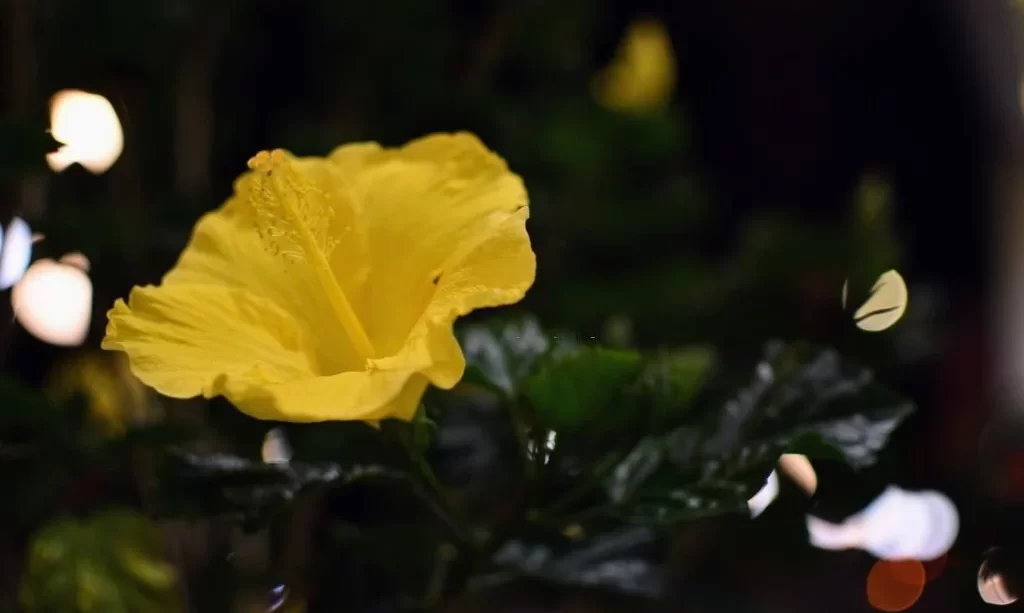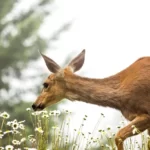Hibiscus flowers, with their striking colors and tropical allure, have captivated the hearts of many garden enthusiasts and nature lovers. Yet, beneath their vibrant exterior lies a question that often piques curiosity: do hibiscus flowers close at night? In this article, we embark on a journey to uncover the fascinating behavior of hibiscus blooms, exploring whether they exhibit nocturnal tendencies. These iconic flowers, celebrated for their beauty and cultural significance, may hold secrets that reveal a captivating aspect of their biology. Let’s delve into the world of hibiscus flowers and their intriguing daytime and nighttime behaviors.
- Stunning Double Peach Blooms: Features large, vibrant double peach flowers that add a touch of tropical beauty to any garden.
- Long Blooming Season: Produces an abundance of flowers from late spring through fall, ensuring a colorful display for months.
- Easy to Grow: This hibiscus bush thrives in full sun and well-drained soil, making it an excellent choice for gardeners of all skill levels.
- Attracts Pollinators: The bright, showy blooms attract hummingbirds, butterflies, and other beneficial pollinators to your garden.
- Versatile Landscaping Plant: Ideal for use as a focal point in garden beds, borders, or as a striking container plant on patios and porches.
The World of Hibiscus Flowers
Hibiscus flowers, members of the diverse Malvaceae family, are renowned for their wide range of species and global presence. These vibrant blooms can be found in various parts of the world, from tropical rainforests to temperate gardens. What distinguishes hibiscus flowers are their strikingly large, trumpet-shaped petals, often accompanied by a prominent central stigma and stamens. Their visual appeal has made them a beloved addition to gardens and landscapes across cultures. Beyond their aesthetics, hibiscus holds cultural significance, playing roles in traditions, rituals, and herbal remedies around the world.
Daytime Blooming Hibiscus
Hibiscus flowers are primarily recognized for their daytime blooming behavior. As the morning sun bathes them in warmth and light, hibiscus buds gradually unfurl their petals, unveiling their vibrant colors to the world. This daylight-driven blooming process is a testament to the flower’s response to environmental cues. Sunlight serves as a trigger for the opening of hibiscus blooms, facilitating the essential processes of photosynthesis and pollination.
During the daytime, hibiscus flowers become hubs of activity, attracting pollinators like bees and butterflies, contributing to the perpetuation of their species. However, as the sun sets and the day transitions into night, a question arises: do these iconic blossoms retreat and close their petals in response to the darkness? This query takes us into the realm of hibiscus nocturnal behavior, explored in the following section.
The Role of Environmental Factors
The nighttime behavior of hibiscus flowers is influenced by a myriad of environmental factors. Temperature, light levels, and humidity all play essential roles in determining whether hibiscus flowers close at night. In warmer climates, where temperatures remain favorable during the night, some hibiscus species may keep their blooms open. In contrast, in cooler conditions, hibiscus flowers may have a tendency to close their petals as a protective mechanism against nighttime chill. Similarly, changes in humidity levels can also impact the behavior of hibiscus blooms, as higher humidity may encourage flowers to remain open.
Hibiscus Varieties and Nighttime Behavior
The world of hibiscus boasts a diverse array of species and varieties, each with its unique characteristics and behaviors. While many hibiscus species primarily exhibit daytime blooming tendencies, there are exceptions. Certain hibiscus varieties are known to display more pronounced nocturnal behavior, with petals tightly closing as the day fades into night. The variability in nighttime behavior among hibiscus varieties adds depth to the study of these fascinating blooms, offering a tapestry of floral experiences for enthusiasts.
- PLEASE CHOOSE HEAT PACK OPTION IF NIGHT TEMPERATURES ARE BELOW 38F
- Bloom Time: Year Round; Hibiscus plants produce beautiful flowers!
- Overall Size: 36 inches to 42 inches tall including the 10 inch planter.
- Environment: The tropical Hibiscus plant loves sun, make sure to find your plant a sunny spot.
- Watering: High, Hibiscus plants love water! USDA Plant Hardiness Zone: 9 to 11
Observations in Different Climates
The behavior of hibiscus flowers at night can vary significantly depending on the climate in which they are grown. Tropical regions, with their consistently warm temperatures, may witness hibiscus flowers that remain open throughout the night. In contrast, hibiscus plants in temperate climates, where nights can be cooler, may display more noticeable nighttime closing behavior. These regional variations provide insights into the adaptability and sensitivity of hibiscus blooms to their surrounding environment.
Hibiscus in Human Culture
Beyond their biological behaviors, hibiscus flowers hold a prominent place in human culture. They feature in folklore, traditions, and rituals across different societies. The symbolism associated with hibiscus may be intertwined with its nocturnal behavior, signifying themes of transformation, renewal, or the cycle of day and night in cultural narratives. Understanding the cultural significance of hibiscus enhances our appreciation of these blooms and the diverse ways they are woven into the fabric of human societies.
Conclusion
In the enchanting world of hibiscus flowers, the question of whether they close at night leads us into a realm of nuanced behaviors and environmental interactions. While many hibiscus species primarily bloom during the day, their nighttime behavior varies based on factors such as temperature, humidity, and regional climates. The diversity of hibiscus varieties adds further complexity to their nocturnal tendencies.
Beyond the scientific exploration, hibiscus flowers are deeply embedded in human culture, symbolizing themes that may align with their nocturnal behavior. As we gaze upon these exotic blossoms, whether open or closed at night, we are reminded of the intricate interplay between nature, culture, and the enduring allure of these tropical treasures.





